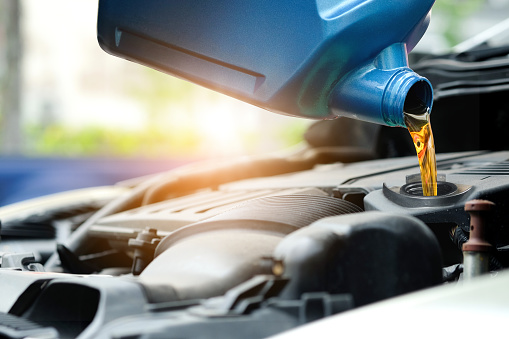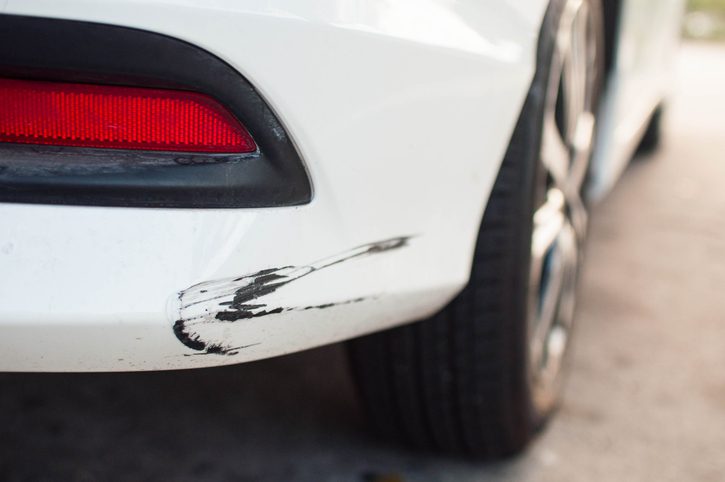Breaking in a new car is a practice that has been recommended by manufacturers for decades. It’s a combination of driving techniques, precautions and maintenance tasks, which are ultimately supposed to help extend a car’s lifespan.
Do you want the moving parts of the engine to settle in and start working together properly? Of course you do! This is exactly why car manufacturers issue guidelines instructing owners to drive and maintain their new vehicles in a certain way for a given period of time.
Thanks to advances in technology, the need to break in new cars has been greatly reduced in recent years. Automakers nowadays use much more sophisticated oils, stronger materials for the engine parts and more advanced casting methods, so they don’t need to be run-in like they used to be in the past. However, there are still a lot of automakers recommending car owners to practice caution during what has traditionally been considered the breaking-in period. The reason they continue to issue these guidelines is to prevent any defects that could potentially arise from an aggressive style of driving and improper car maintenance for the first couple hundred miles.
Low Revs, Low Speeds and Timely Oil Changes
The most common break-in practices recommended by car makers include:
- Gentle driving
- Avoiding extreme speeds
- Accelerating gradually
Complete First Oil Change After 50 to 100 Miles
You should do the first oil change much sooner than what is instructed in the owner’s manual. Then you should do it again after the run-in period ends. Most experts consider the first 500 miles as a reasonable and sufficient break-in period.
Keep Revs Under the 3,000 rpm Mark
The reasoning behind this practice is that keeping revs relatively low helps the piston rings seal against the cylinder bores properly. The piston rings are small bands that prevent oil leaks in the car. However, when a car is new, these bands need time to settle within the cylinders. Revving your engine can disrupt the settling process. Respecting the break-in period and allowing your piston rings to settle will greatly impact your car’s overall health.
Drive at Speeds of 30 mph and 50 mph in Intervals of About 5 Minutes Each
You also shouldn’t exceed the posted speed limits. This is why driving in stop-and-go traffic in urban areas is preferable for the first couple hundred miles, where you rarely get to drive with constant and high speeds, unlike driving on the highway.
Some Cars Come Broken-In
Although most new cars nowadays don’t require as much caution during the run-in period like they used to in the past, this practice is still widely recommended by auto manufacturers. There are some cars that are broken-in by automakers at the factory before they roll them out. This refers mainly to high-performance sports cars whose owners would obviously want to step on the gas right from the start, without having to run them in.
That is the case with the Acura NSX, whose engine, as the manufacturer states, is machine-balanced and broken-in so that it is ready for high-speed driving the minute it is taken off a car dealership’s lot. The automaker says that each Acura NSX engine goes through a 150-mile break-in procedure, so customers don’t have to worry about keeping the revs down. They also don’t need to be concerned about being gentle on the accelerator and the brakes.
Tire Maintenance
Proper tire inflation and regular rotation is highly recommended. Car owners are advised to rotate their tires every 3,000 to 6,000 miles. This ensures that the wear on the tires is even. When your tires are worn evenly, it results in improved gas mileage. As far as inflation is concerned, you have to check your owner’s manual to see the correct pressure for the tires your car is equipped with. Once you find out the correct air pressure, make sure the tires are inflated at the recommended pressure at all times. You can use a tire pressure gauge for that, which you can find at most auto parts stores.
Tire pressure is affected by temperature change. As the temperature rises, the air pressure in the tire increases. Conversely, when temperatures drop, tire pressure drops, too. Estimates show that for every change in temperature by 10 degrees, tire pressure changes by 1 psi. For instance, if the temperature rises by 10 degrees, your tire pressure will increase by 1 psi and vice versa. So, if the temperature decreases by 10 degrees, your tire pressure will decrease by 1 psi. The more the psi of your tires drops, the more likely traction and handling will be affected.
This is why drivers need to monitor tire inflation during substantial temperature fluctuations. By making sure your tires are properly inflated, you help extend their longevity by up to 10% and prevent a potentially significant decrease in fuel economy.
Regular and Proper Maintenance to Extend Your Car’s Life
Aside from following the break-in guidelines in your car owner’s manual, there are a few more things you can do to extend the longevity of your car:
Change the air and oil filters as recommended in the owner’s manual.
Clogged and dirty filters make the engine work harder to achieve the desired performance. This can accelerate its wear and tear and affect your car’s fuel economy.
Checking the fluids should be next on your maintenance task list.
The level of transmission fluid, antifreeze, oil, brake fluid and power steering fluid, should be monitored regularly, and topped up as needed. This task is crucial for improving your car’s reliability and extending the life of the car’s engine as well as other key components.
Drive With Confidence
As previously noted, the practice of breaking-in a new car has changed significantly in recent years. But that doesn’t mean that you should go ahead and push your engine to the limit from the minute you leave the dealer’s lot. No matter how far car engine technology has come, you should still take it easy for the first couple hundred miles. Following the guidelines in your car owner’s manual during the break-in period will help protect the engine and extend its longevity. What’s more, it will improve the car’s gas mileage, boost its performance and save you a lot of money in unexpected repairs for years to come. Ultimately, just like having good car insurance, maintaining your car and breaking it in are crucial for protecting your investment.
What do you do to break in a new car? How do you plan to keep your car running smoothly for years to come?







Thank you for providing such an amazing article! It is really useful for cars and engines. I really enjoyed reading it. It is quite beneficial to us.
EXCELENT article… I’ll be getting a new 2022 Subaru Forester… it has been 19 years since I last bought a car… 2003 Suzuki Aerio sx awd… and I needed a refresher course on breaking in a new car.
Hi Michael,
I received my new 2022 Forester two weeks ago and up to 410 miles. I am religiously following Subaru’s break-in recommendations, and also recommendations from years ago. Best practice is better than just adequate practice.
This is a great blog, thank you for sharing your knowledge! I think this is one of the best websites I have come across.
Useful post! I really need this type of article.. this is very useful for me.
I just got my new Toyota Yaris Y Plus 2021 Model.
Here in Saudi Arabia it’s hard for us to Drive up to 30 mph – 50 mph, minimum speed lane is 50-70 mph.. but I’m just hoping for a regular and proper maintenance to extend my car’s life..
Thank you for sharing a wonderful and helpful information.
Amazing write up! Thanks for this post
I have got a new thing to learn about this article. Thank you for sharing the information.
Thanks for putting together such an awesome article on break-in period! I’m always surprised to see how many people don’t know about the importance of this.
I’ve been driving a new car lately and one thing that really sticks out is the importance of going easy with it during its first couple thousand miles.
I have got a new thing to learn about this article. Thank you for sharing the information.
Wheel balancing is necessary for the consistent performance and efficiency of your car. Get it done with us for a very cheap cost.
Properly aligned wheels ensure your car handles properly, and therefore increases the life of your tyres and increases your safety.
This article has a lot of information
thank you for sharing useful information.
If the oil leaks out of the engine, (from oil filter), after driving 27 miles and there is only 1.5 quarts left in the engine, (4.7 qts. full oil level). Does this cause engine irreversible damage? Loud noise from engine was heard, (rod knock ?), and red engine light came on right before it was turned off.
Great article!!
Thanks For sharing your good information??
Dirve with confidence is a good concept to avoid accidents in the world
Thank you for sharing the information.
Thanks for sharing about driving information in your blog
Thanks For sharing your good information
Very good information. Thank you. Things have changed since I purchased my car in 2011
Old cars were better!
New cars are built to enhance manufacture and dealer enrichment!
I regret buying a new car!
Hartford, do you pay for theft prevention costs vis-a-vis catalytic converters? My car is garaged in my backyard but in those instances it’s not……I heard it can take less than a minute for thieves to remove it. Some auto shops install a metal plate cover. Any Hartford recommendations for installers in the 91802 area?
Gilbert – You may be covered for the theft if you carry comprehensive coverage on the vehicle. Our claims professionals are here and ready to assist you. Give them a call at 877-805-9918.
Thanks For sharing your good knowledge
Properly aligned wheels ensure your car handles properly, and therefore increases the life of your tyres and increases your safety.
This is a Nice Blog, Thanks For sharing your knowledge!! I replaced my worn out car engine with a Used used HYUNDAI Tucson engines. Now my cars performance is very smooth. I bought this engine from Autoparts-miles.com one of the best site to buy Used car Engines online.
I also drive a 1998 V 70 estate, had it for 10 years, and doesn’t burn any oil or miss a beat, a fantastic machine!
Good item at a best price and delivered the next morning with no problem. after reading reviews but it all went very good and I will return.
This is a Nice Blog, Thanks For sharing your knowledge!! I replaced my worn out car engine with a Used Mazda 2 Engine. Now my cars performance is very smooth. I bought this engine from Autoparts-miles.com one of the best site to buy Used car Engines online.
the best car and the best engine so far I have used. The car goes smooth and the mileage is good. Volkswagen beetle engine works excellently.
Thanks for sharing information in your blog
Very useful info,
thank you for this valuable information
thank you for sharing this amazing information
I found a new truck out of state that I will need to drive home. That drive will be about 600 miles. What kind of driving should I observe, so as to not cause any long term damage. I have been told not to drive at a constant high speed, like you would on an older vehicle. I assume that I should vary my speed during the trip. Any other advice you could give me would be appreciated. Thanks!
Great article! These tips would certainly go a long way, not just for breaking-in cars but for general maintenance as well. Breaking-in your car properly and good maintenance will surely prolong your car’s life and would enable you to maximize its full value. Another great tip I got from DigMyRide is to use synthetic oil. Synthetic oil allows your engine to have less friction since it has little to no impurities compared to traditional oil. Paying a little extra will surely be well worth it when it comes to your engine’s health.
It was helpful when you explained that the air and oil filters should be changed as recommended to help avoid unnecessary wear and tear on the engine of our car. My husband and I are looking for a loan for a new car so we can have a reliable vehicle to use for road trips with our kids this summer. Thanks for teaching me what methods we can use to help our investment in the new car last as long as possible! http://ticreditunion.org/Vehicle-Loans
Hi, thank you for the helpful tips. I just received my new Polo R-Line, equipped with a ridiculously small engine of just 1.0 ltr, 3 cylinder engine which is turbo charged and pushes out 85Kw. Reason being that our petrol prices here in South Africa are going through the roof and I travel long distance every day to work! It’s supposed to use 1/3 of the petrol our 5 year old Kia Sportage uses, but I was a bit concerned to see the average consumption being around 7 ltr. per 100 km at the moment (sorry we use “imperial” measures), but I noticed the consumption is coming down now in the second week…. your advice all makes sense and I will be patient before I take her on the “open road” and see how she can perform… until then, we’ll be sitting in the ‘slow lane’. Haha!
I think an article correction is needed in regards to new cars: No, not all modern cars need to have tires rotated front to back.
Some cars use different tire/wheel sizes front to back. (My 2008 BMW 328 with factory sport wheel setup.)
Some cars have the same size tires front and back, but the wheels have different offsets are are specific to front and back (my daughter’s 1991 Camaro)
Some cars use directional rotation tires which can go move to back, but not side to side.
Some manufacturers (BMW that I know of) do not recommend rotating tires front to back even if they are same size. I’ve never heard a good explanation of why, so I rotate mine front to back to even up tire wear.
IF your tires are same size front to back, and IF they are not directional in rotation (it says so on the sidewall if they are) and IF the wheels on your car are designed to go on any corner, then you can rotate them.
In other words, ask your tire guys about your car and your tires. Author = Albert Powell, Director, Learning Technologies at Colorado State University (1998-present)
No mention about using brakes gently till the pads seat properly on the rims. No mention of early changing automatic transmission – typically ignored – rather than ignoring it. No mention of having front end checked by dealer at first oil change. Cars are never fully assembled as intended by mfg. specs. So it really does pay to have the dealer do a full inspection at the first oil change.
The tire maintenance paragraph has “wear” spelled as “ware”. I realize spell check is probably to blame, but it should have been caught in edit.
Thanks for finding that error, Patricia! All fixed.
Very helpful…Thanks
Thanks for sharing this information with us. This information is really helpful and interesting . Keep sharing these types of articles.
I agree that manufacturers always recommend guidelines for car maintenance to ensure that the car is working at its finest. Thanks for educating me about the car maintenance and tune-up process that needs to be done. My brother will buy a new car next month, and I will remind him of regular maintenance for proper car functionality and longevity. I’m sure he will find an auto service who can assist him further.
Thanks for reading Bree, we are glad you found this helpful!
Thanks, your article on ‘How to break in a new car’ is impressive & will say your article is one of the best and it solves all my issue regarding car breaks. Good work keep doing.
Thanks for your feedback, we’re glad we could help!
Very good information. Thank you. Things have changed since I purchased my car in 1997.
I recently had a flat tire on my 2015 enclave Buick. 22,000 miles. The salesman insisted that I had to buy 4 new tires. Did I get ripped off.
Thanks so much, very useful advice
I want to thank you very much this is very interesting and good used to me very helpful
If the oil leaks out of the engine, (from oil filter), after driving 27 miles and there is only 1.5 quarts left in the engine, (4.7 qts. full oil level). Does this cause engine irreversible damage? Loud noise from engine was heard, (rod knock ?), and red engine light came on right before it was turned off.
Thank You for this useful information.
It’s generally advised to use conventional motor oil during the break-in period. Synthetic motor oil is better in every way, but should not be used until the engine has been well broken-in.
While it is helpful to suggest to new car owners that engine break-in should – absolutely – still be performed, the guidelines offered by manufacturers are kept overly simple, not to benefit the engine and its new owner, but to limit the car maker’s liability if it were to offer more-accurate and complete break-in “rules.” Overly-simplistic guidelines, such as “drive it easy for the first 200 miles” or “keep engine revs below 3,000” will often result in the now fairly common (and lasting) excessive oil consumption issues, brought about by the adoption of new “low-tension” piston rings in direct-injection (“GDI”) engines. Without going into further details, I’d simply suggest consulting someone thoroughly experienced in modern engine technology – not a dealer’s service advisor – for proper advice regarding break-in procedures for new car engines and the best oil to be used to ensure longevity.
Great article, I like the car and the motive is always my top concern for my car. A good car when it has the perfect engine system and maintaining and maintaining the engine in good working condition is a very enjoyable experience for me. I read your article and learned more about car care for your car better from here. Thank you for sharing it and keep writing
Thanks Robert. Glad you found the information helpful!